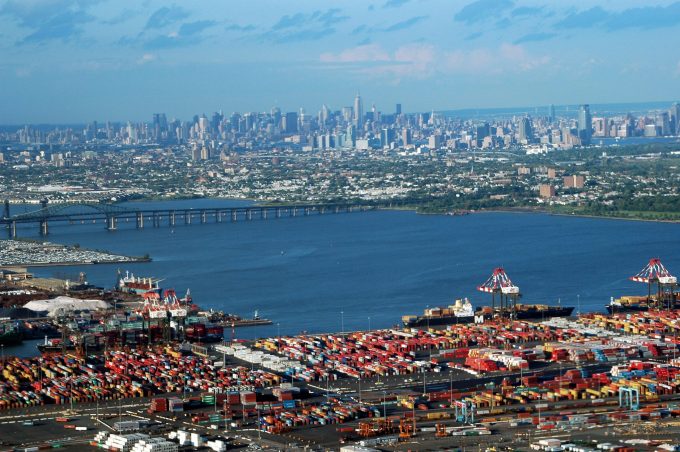Norfolk Southern uses earnings call to derail activist investor claims
Financial results barely registered in Norfolk Southern’s (NS) earnings this week – the Class I ...

US importers and forwarders are looking to New York’s Port Elizabeth Terminal for a faster intermodal link to the US Midwest and Canada.
APM Terminals Elizabeth is marketing a new service that claims faster transfers from ship to rail, with multiple daily train departures to the interior.
Key to the operation is a direct-to-rail landing zone at the terminal for rapid transfer of containers to an 18-track rail operation to build double-stack trains to feed the networks of CSX, Norfolk Southern and CN, the three Class I rail carriers offering transit times to the Midwest and Canada of between two and four days.
According to APM Terminals, the fast box transfer from vessel to train results in 12-hour dwell time for import rail cargo, while four train departures a day to the interior will translate into short transit times.
The terminal recently completed a $200m infrastructure investment that saw the installation of new ship-to-shore cranes and truck gates and modernised IT systems.
And detention times for imported boxes have come down 75%, according to the terminal operator.
One factor that adds to the attraction of the new intermodal service is that Port Elizabeth is the first port of call on the US east coast for multiple vessel services, and forwarders have welcomed the new offering.
“Anything a port does to improve transit or reliability is a big bonus,” said Craig Grossgart, SVP global ocean at Seko Logistics.
“It’s a great idea. It’s the kind of service that is needed,” added Bob Imbriani, EVP international of Team Worldwide, who hopes the new service lives up to its promise, given the problems that have plagued imports into the US.
“One question we have is how can they control all the players in the process?” he asked. “We’ve had significant problems with rail out of east coast ports.”
Team is planning to do a test shipment to ascertain the reliability of the service, Mr Imbriani said, adding that forwarders and importers will be clamouring for it if it lives up to expectations.
Mr Grossgart reckons the service will be well received. Expedited intermodal offerings through the main west coast gateway with rapid transfers and fast train runs to the interior (BNSF managed a 104-hour transit to Chicago) have proven extremely popular, he pointed out.
While APM Terminals’ venture looks particularly appealing in the present landscape of clogged up terminals and rail yards, the port of Baltimore is embarking on a longer-term play to position itself as a gateway for intermodal traffic to the interior.
Work recently started on a $466m project to expand a rail tunnel, expected to take two years to complete. This followed seven years of negotiations, mostly about funding, which is finally in place. This includes a $125m grant under the US Department of Transportation’s Infrastructure of Rebuilding America programme, $147m from the state of Maryland and $91m from CSX, which owns the tunnel and rail lines.
The purpose is to allow the tunnel to take double-stacked trains, meaning an additional 160,000 boxes can be moved through in a year.
Baltimore is the 14th-largest US port and has clocked up 8.3% compound annual growth in recent years, but the inability to run double-stacked trains has been a roadblock to its intermodal ambitions.
The marine service side makes up the other part of the equation, Mr Imbriani noted.
“Baltimore looks like a good service, but it depends what vessels from which origins call there,” he said. “Mobile has very good rail connections, but not a tremendous amount of sailings.”
Comment on this article